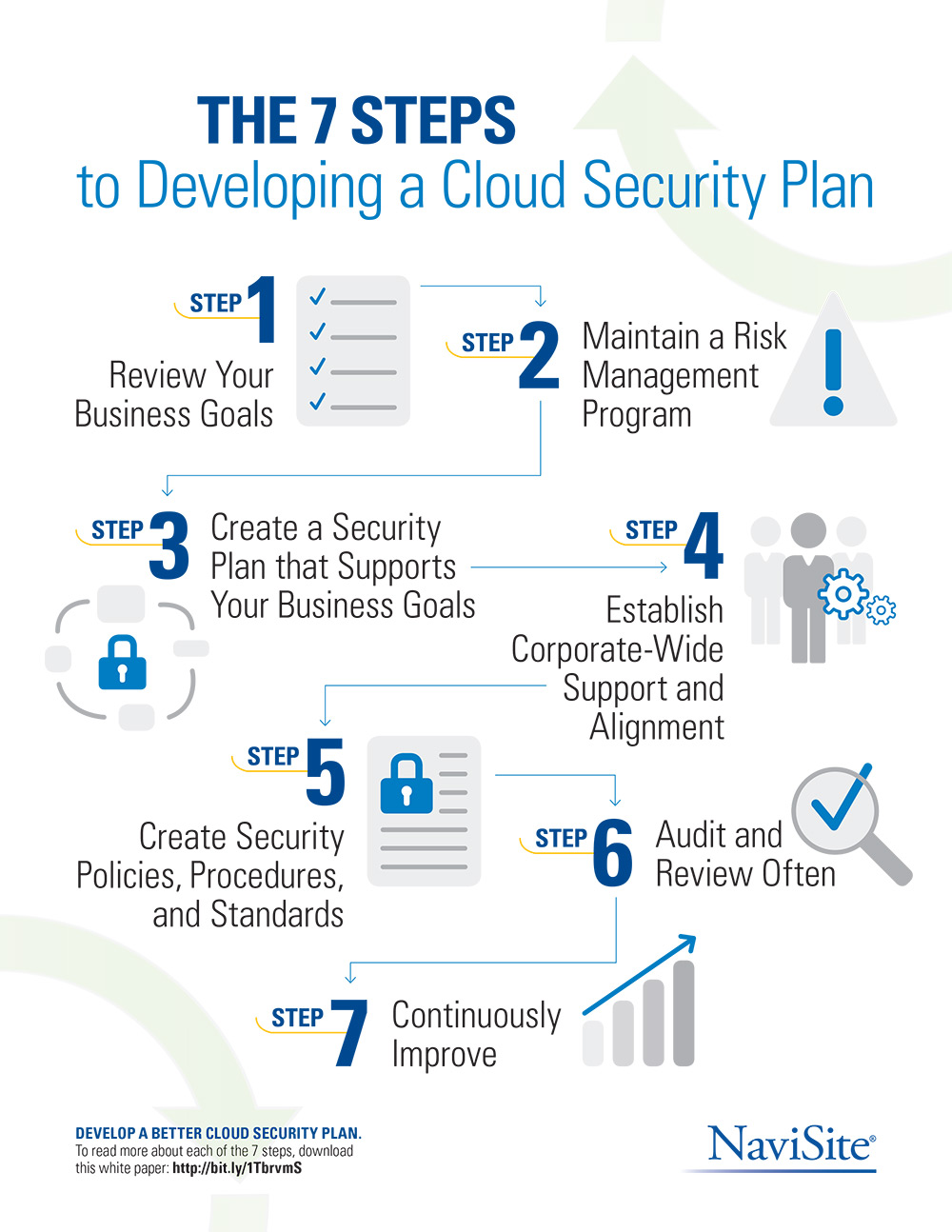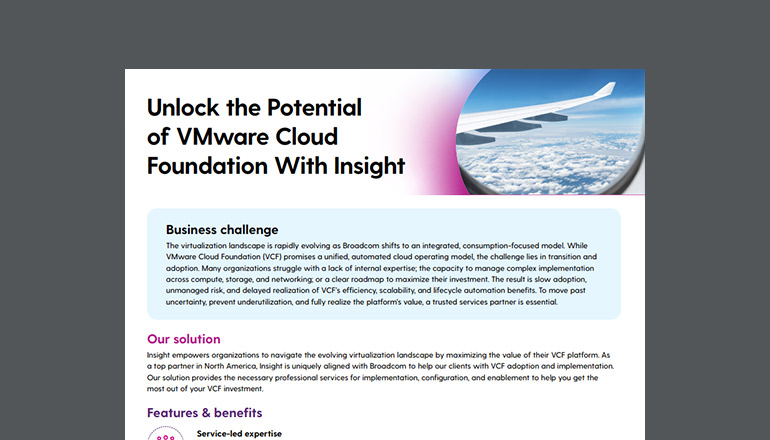Infographic The 7 Steps to Developing a Cloud Security Plan
Moving to the cloud? Following this manageable, seven-step cloud security plan development process from NaviSite in the infographic and our expanded commentary below will help keep your sensitive data safe from growing cyberthreats.
By Insight Editor / 24 Sep 2016 / Topics: Cloud
Without the right processes and policies in place, a cloud adoption can cause many security issues for your organization. We find that following these seven cloud security plan steps help organizations create a safe environment.
The seven cloud security plan steps are:
1. Review your business goals:
Cleary defining how the cloud will support your business goals helps you make informed decisions throughout your cloud journey. Without a clear understanding of how your cloud adoption supports the business, you can end up wasting resources, driving up costs and creating inefficiency.
2. Maintain a risk management program:
This is your process for assessing and managing cyberthreats to your cloud resources. You’ll want to have dedicated resources for this program who are responsible for addressing issues and safeguarding resources as threats arise.
3. Create a security plan that supports your business goals:
Here, you’ll verify that your security processes are aligned to business goals. Some organizations may see security processes as a roadblock to your business goals, but this can lead to compromised IT resources, downtime and more. So, make sure your security processes keep your systems safe while continuing to support the business.
4. Establish corporate-wide support and alignment:
Here is where you’ll align the entire organization around how it handles cloud security. Without alignment and close collaboration with each business stakeholder, policies might not be closely followed and security issues could quickly arise.
5. Create security policies, procedures and standards:
With organization-wide alignment established and everyone ready to play their part in keeping the business secure, it’s time to define responsibilities and processes. Make sure everyone knows what they need to do when an incident or threat arises for fast and effective remediation.
6. Audit and review often:
Cyberthreats are constantly evolving, and security is not a set-it-and-forget-it IT process. You’ll need to stay up to date on new threats and review how your organization can withstand these pressures, so you can quickly adjust.
7. Continuously improve:
Again, it’s important to maintain a culture of continuous improvement when it comes to your cloud security plan, as cyberthreats are increasingly improving in their effectiveness. Your organization will need to be flexible and critical of how it operates to stay safe.






